Exploring Iconic Sites in Lagos: Apapa Port, Lekki-Ikoyi Link Bridge, Third Mainland Bridge, Tranquil Whispering Palms Resort, and Famous Landmark Beach
Apapa Port is a major seaport located in Lagos, Nigeria. It is one of the largest and busiest ports in Africa, serving as a crucial gateway for international trade in the region. Here’s an exploration of Apapa Port:
Location:
Apapa Port is situated in the Apapa area of Lagos, Nigeria. It is strategically located on the Gulf of Guinea, making it an important maritime hub.
Key Features:
- Port Facilities: Apapa Port consists of multiple terminals that handle different types of cargo, including containers, general cargo, and bulk cargo. The port facilities are equipped with modern infrastructure to facilitate efficient loading and unloading of ships.
- Container Terminals: The port has dedicated container terminals that handle a significant portion of the country’s containerized cargo. These terminals are equipped with container handling equipment such as cranes and container yards.
- Cargo Handling: Apapa Port handles a diverse range of goods, including petroleum products, raw materials, consumer goods, machinery, and more. The port plays a vital role in supporting Nigeria’s import and export activities.
- Connection to Hinterland: Apapa Port is well-connected to the Nigerian hinterland through road and rail networks. The port serves as a critical link for transporting goods to and from various parts of the country.
- Traffic and Congestion: Due to its importance and high cargo volume, Apapa Port has faced challenges related to traffic congestion and logistical issues. Efforts have been made to address these challenges and improve the efficiency of cargo movement.
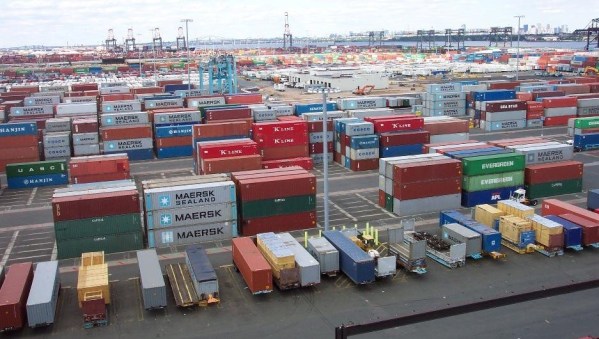
Challenges:
- Traffic Congestion: The Apapa area, including the port surroundings, has been notorious for traffic congestion. The heavy traffic often affects the movement of goods and people in the region.
- Infrastructure Development: The port infrastructure has faced challenges in keeping up with the increasing demand. Upgrading and expanding facilities are ongoing efforts to enhance the port’s capacity.
Importance:
- Economic Significance: Apapa Port is a crucial economic driver for Nigeria. It facilitates international trade, contributing to the country’s economic growth.
- Employment Opportunities: The port provides employment opportunities for a significant number of people, including those involved in cargo handling, transportation, and logistics.
Tourist Information:
While Apapa Port itself is primarily an industrial and commercial area, visitors interested in maritime activities and the economic dynamics of a major African port may find it informative to observe the port’s operations. However, tourists are advised to be aware of security concerns and local regulations.
Lekki-Ikoyi Link Bridge: Lagos Significance

The Lekki-Ikoyi Link Bridge is another iconic bridge in Lagos, Nigeria, connecting the Lekki Peninsula to Ikoyi Island. Here is an overview of the Lekki-Ikoyi Link Bridge:
Location:
The Lekki-Ikoyi Link Bridge spans the Five Cowrie Creek, connecting Lekki Phase 1 on the Lekki Peninsula to Ikoyi Island in Lagos. The bridge is a key infrastructure project that enhances connectivity and eases transportation between these areas.
Key Features:
- Construction and Opening: The Lekki-Ikoyi Link Bridge was officially commissioned on December 1, 2012. It was constructed to improve transportation efficiency and provide an alternative route for commuters between the Lekki Peninsula and Ikoyi.
- Toll Bridge: The bridge operates as a toll bridge, and commuters are required to pay a toll fee for passage. The toll system helps generate revenue for the maintenance and upkeep of the bridge.
- Pedestrian Walkway: In addition to vehicular traffic, the Lekki-Ikoyi Link Bridge has a dedicated pedestrian walkway, allowing pedestrians to enjoy a stroll with scenic views of the creek.
- Scenic Views: The bridge offers beautiful views of the Lagos Lagoon and the surrounding areas, making it a popular route for those who appreciate a scenic drive or walk.
- Illumination: Similar to other prominent bridges in Lagos, the Lekki-Ikoyi Link Bridge is illuminated at night, creating a visually striking display.
Tips for Visitors:
- Scenic Walks: The pedestrian walkway on the bridge provides an excellent opportunity for a scenic walk. It’s a popular choice for exercise enthusiasts and those looking to enjoy the views.
- Toll Payment: If you are driving across the bridge, be prepared to pay the toll fee, which can be paid electronically or with cash at the toll booths.
- Nighttime Illumination: Consider visiting the bridge in the evening or at night to see the illuminated structure, enhancing its aesthetic appeal.
The Lekki-Ikoyi Link Bridge has become a notable landmark in Lagos, contributing to the city’s infrastructure and offering a picturesque link between the Lekki Peninsula and Ikoyi Island. It represents the city’s commitment to modern urban development and improved transportation networks.
Third Mainland Bridge: Africa’s Longest

The Third Mainland Bridge in Lagos, Nigeria, is an iconic and significant monument that holds historical, infrastructural, and cultural importance. Here is an overview of the Third Mainland Bridge:
Location:
The Third Mainland Bridge is located in Lagos, connecting the Lagos Island to the mainland of the city. It spans the Lagos Lagoon and connects the Oworonshoki and Adeniji Adele Interchanges.
Key Features:
- Length: The Third Mainland Bridge is one of the longest bridges in Africa, with a total length of approximately 11.8 kilometers (about 7.4 miles) It was the longest bridge in Africa until 1996 when the 6th October Bridge located in Cairo was completed.
- Construction and Opening: In the 1970s, following the end of Nigeria’s civil war, a period of increasing oil price followed and Nigeria went through series of economic upturns. A need for improved infrastructural facilities especially in the capital city of Lagos that had gone through a period of port congestion and then an upward tick in vehicular traffic created the impetus for a third bridge linking the commercial-oriented Lagos Island with the growing urban settlements of mainland Lagos. A contract was awarded for a third mainland bridge in 1976. Construction of the bridge was done in phases. The first phase was contracted to a PGH consortium, a venture consisting, Impressit Girola and Borini Prono, while Trevi Group provided support services for piling. The first phase was designed to be 5 kilometers in length, starting from the Island and ending at Ebute Metta, towards Yaba. The bridge elevates to 3 kilometers above the water and made from pre-stressed reinforced concrete. Foundation piles had varying depths of between 36 and 54 meters and pile diameter is based on potential carrying road, diameters of 1500mm are used for the main bridge crossing the Lagos lagoon and for the slipway and approach roads, pile diameter was between 800mm and 1200mm. The first phase was completed in 1980. The second phase from Ebute-Metta to Oworonshoki was awarded to Julius Berger in Nigeria. The bridge was commissioned for use in 1990 and was constructed to alleviate traffic congestion in Lagos and improve transportation between the mainland and the island.
- Architectural Design: The bridge is a complex engineering structure with different sections, including a long stretch of elevated roadway, a major bridge across the Lagos Lagoon, and various interchanges on both ends.
- Traffic Volume: The Third Mainland Bridge plays a crucial role in easing traffic congestion in Lagos, providing a vital link for commuters traveling between the densely populated mainland and the commercial and financial districts on Lagos Island.
- Cultural Significance: The bridge has become an integral part of Lagos’s cultural and urban landscape. It is often featured in photographs, films, and other media representations of the city.
- Maintenance and Repairs: Over the years, the bridge has undergone maintenance and repair works to ensure its structural integrity. Periodic closures for maintenance are carried out to address wear and tear.
- Nighttime Illumination: The bridge is often illuminated at night, creating a beautiful and recognizable nighttime skyline for Lagos.
Tips for Visitors:
- Photography: The Third Mainland Bridge offers excellent photo opportunities, especially during sunset or nighttime when it is illuminated.
- Traffic Considerations: Due to its importance in the transportation network, traffic conditions on the bridge can vary. It’s advisable to plan visits during non-peak hours to avoid congestion.
- Maintenance Schedules: If you plan to use the bridge, check for any scheduled maintenance or repair works, as this may impact traffic flow.
The Third Mainland Bridge stands as a symbol of Lagos’s growth, development, and the dynamic nature of its urban landscape. It is not only a critical transportation artery but also a cultural and architectural landmark for the city.
Whispering Palms: Tranquil Beach Resort, Badagry, Lagos

Whispering Palms is a popular beach resort located in Badagry, Lagos State, Nigeria. It is known for its serene environment, lush greenery, and cultural attractions. Here’s an overview of Whispering Palms:
Location:
Whispering Palms is situated in Badagry, which is a historic town in Lagos State, Nigeria. It is located along the Badagry Creek, providing a scenic and tranquil setting.
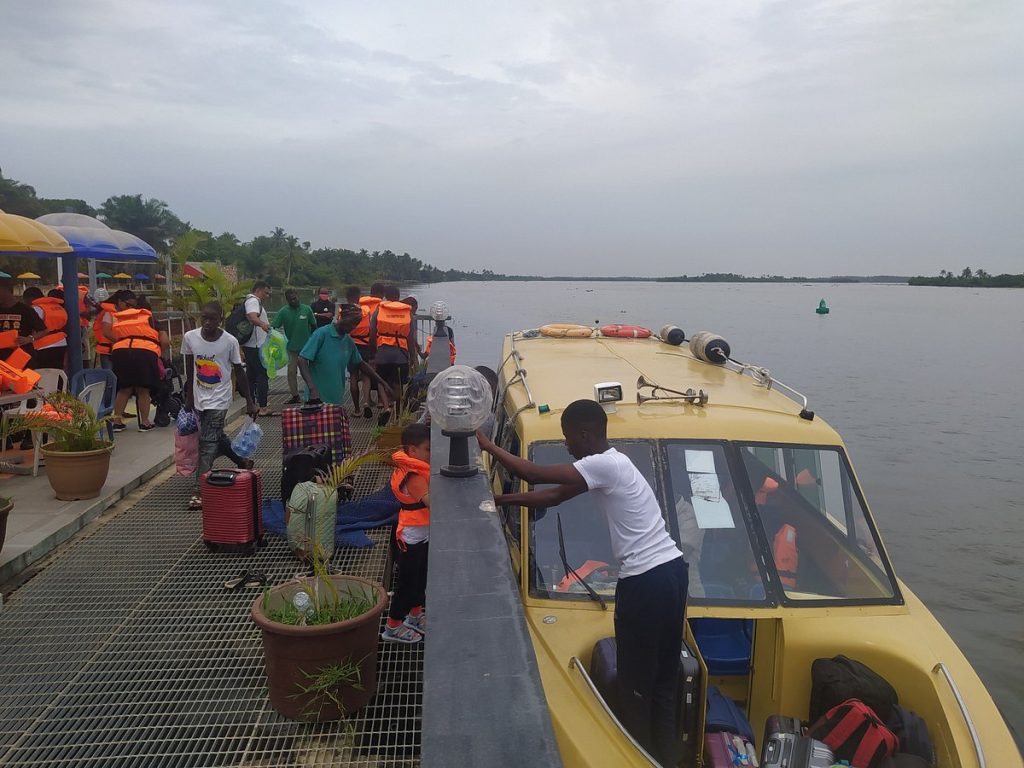
Key Features and Attractions:
- Scenic Environment: The resort is known for its beautiful natural surroundings, including well-maintained gardens, coconut groves, and a peaceful atmosphere.
- Cultural Significance: Badagry is historically significant, being a major hub for the slave trade in Nigeria. Visitors to Whispering Palms often explore nearby historical sites, including the Badagry Slave Port and the Point of No Return.
- Accommodation: Whispering Palms offers accommodation options, including rooms and chalets, providing a comfortable stay for visitors.
- Beachfront: The resort has a beachfront area where guests can enjoy the sandy shores and the view of the Atlantic Ocean. It’s a serene place for relaxation.
- Boat Cruises: Visitors can take boat cruises along the Badagry Creek, exploring the waterways and enjoying the scenic beauty.
- Cultural Shows: Whispering Palms often hosts cultural shows and performances, allowing guests to experience traditional Nigerian music, dance, and folklore.
- Swimming Pool: The resort has a swimming pool where guests can cool off and enjoy a refreshing swim.
- Restaurant and Bar: There are dining facilities on the premises, offering a variety of local and international dishes. The bar provides a selection of beverages.
- Conference Facilities: Whispering Palms caters to corporate events and conferences, providing conference facilities and meeting spaces.
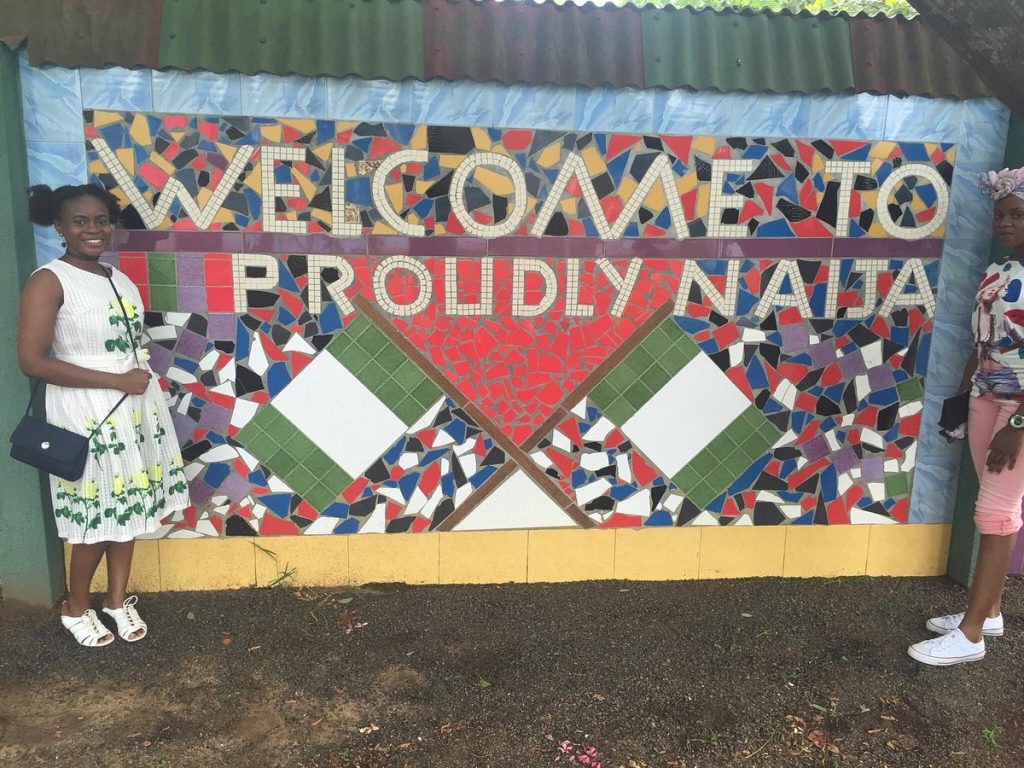
Accessibility:
Whispering Palms is accessible by road from Lagos, with the journey taking approximately 1-2 hours, depending on traffic conditions. Visitors can take the Lagos-Badagry Expressway to reach the resort.
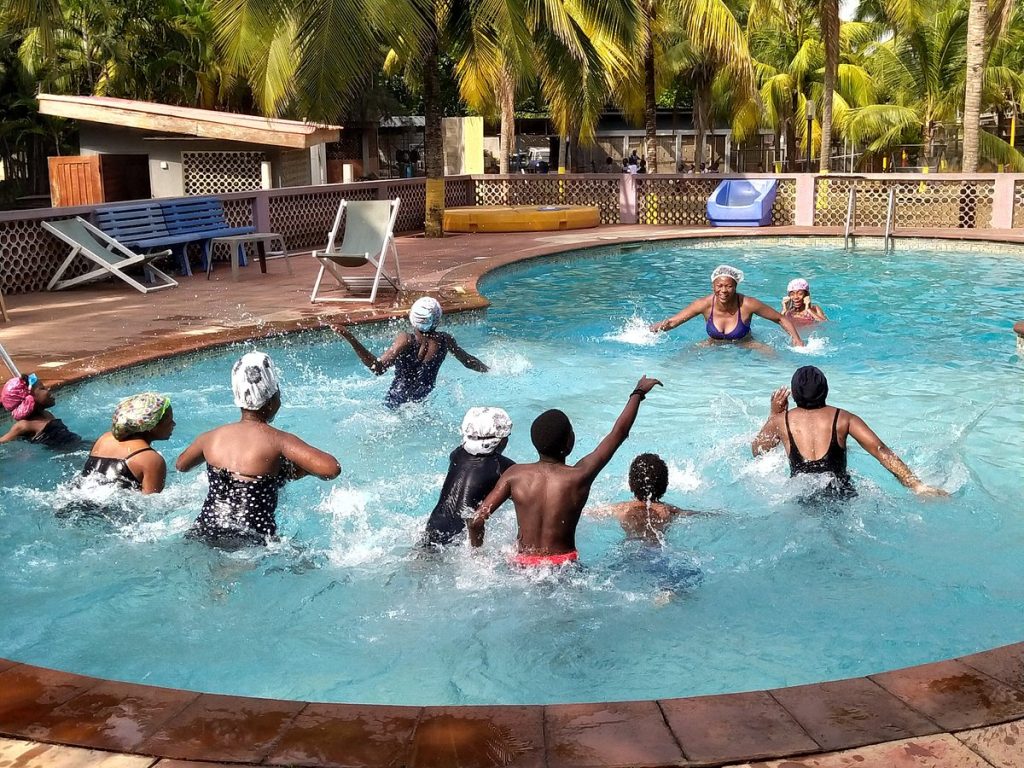
Entrance Fees:
The resort usually has an entrance fee, and additional charges may apply for certain activities or facilities. Prices may vary, so it’s advisable to check with the resort directly for the latest information.
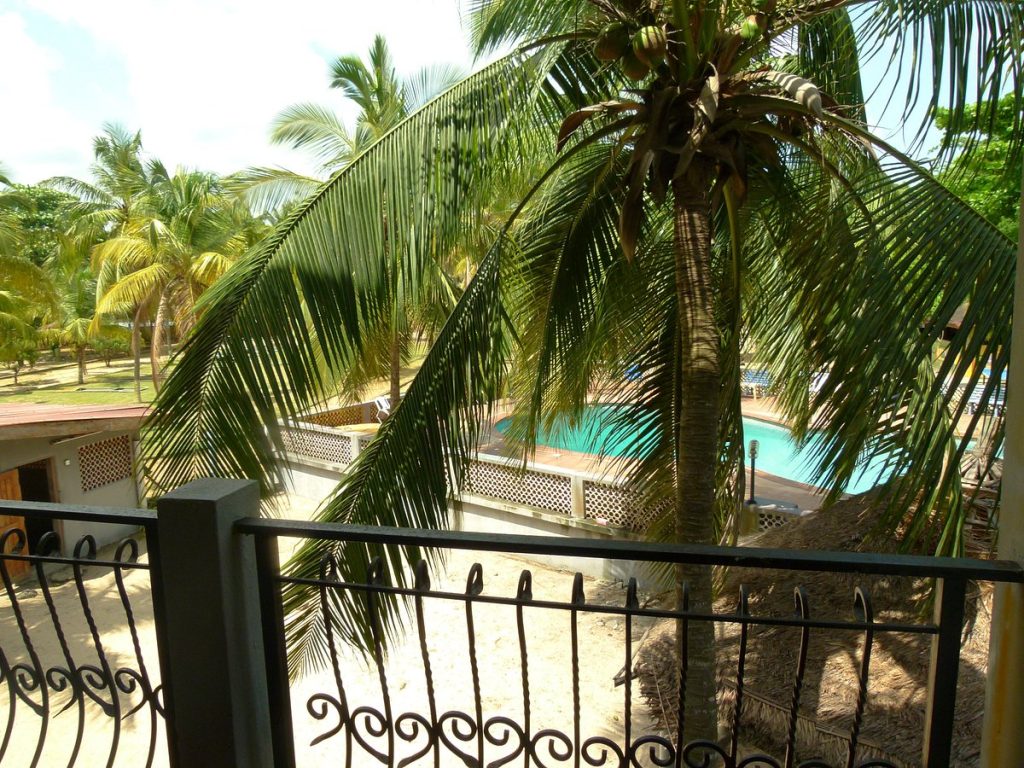
Whispering Palms offers a combination of natural beauty, cultural experiences, and recreational activities, making it a popular destination for both locals and tourists seeking a getaway from the hustle and bustle of city life. As with any travel plans, it’s recommended to confirm details and check for any changes in policies or facilities before visiting.
Landmark Beach: Famous Lagos Beach
- Location and Business Outlets:
- Landmark Beach is located at 4, Water Corporation Drive, Landmark Village, Victoria Island, Lagos.
- It shares the same building with other outlets such as KFC and a cinema.
- Ticketing and Entrance:
- Tickets can be purchased online for ₦2,000 or at the beach for ₦3,000.
- Online booking is recommended to avoid queues, especially during festive periods.
- Photography Opportunities:
- Landmark Beach provides numerous picturesque corners, making it a great spot for photography enthusiasts.
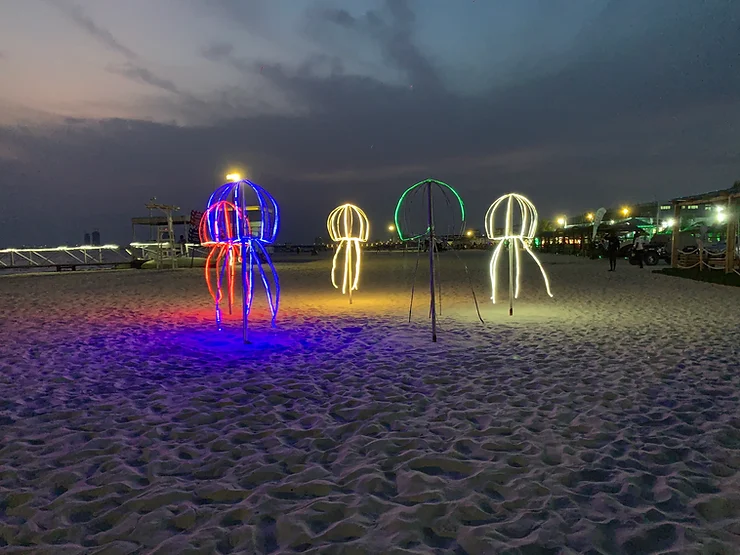
- Food and Drinks:
- Outside food and drinks are not allowed, but there are food and drink stands on the beach offering items such as grilled chicken, turkey, fries, and cocktails at affordable prices.
- Activities:
- The beach offers a variety of activities including an Astroturf pitch, beach paintball, coastline board, jet skiing, beach volleyball, adventure course, windsurfing and kitesurfing, kids play area, beach soccer, cabanas, and loungers, among others.

- Water Experience:
- The beachside offers a refreshing water experience with cold, neat, and salty water.
- Booking and Amenities:
- Booking for chairs and beach umbrellas can be done through the website.
- The beach has ample parking space within the Landmark complex, and there are securities to assist with directions and inquiries.
- Entrance Fee and Booking Process:
- The gate fee is around ₦3,000 per person, and online bookings come with access bands for smooth entry.
- You recommend Landmark Beach as a relaxing, cozy, and peaceful escape for a beach day out.

- Seating Options:
- Picnic tables for 4 people are available for ₦2,000, providing a cost-effective option.
- Cabanas for 8 people cost ₦25,000, and lounge chairs for 1 person cost ₦3,000.
Your detailed information is likely to be helpful for anyone planning a visit to Landmark Beach, providing insights into the facilities, activities, and overall atmosphere. Keep in mind that details such as prices and policies may change, so it’s always a good idea to check the latest information before planning a trip.
Read More Historical Places located in Lagos Nigeria
